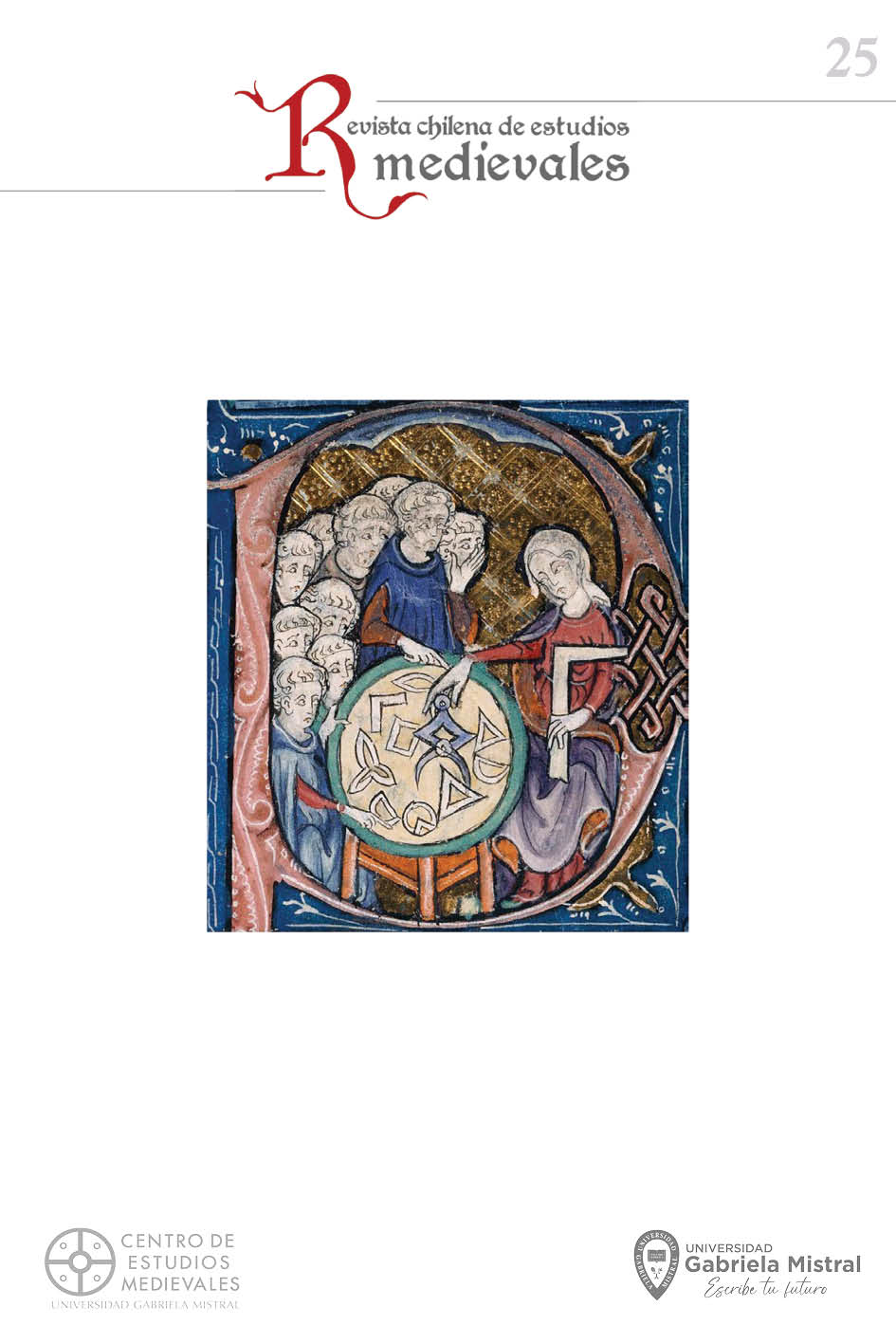Female presence in the renaissance of the 12th century, Pernoud and Duby in the historiographic debate
Keywords:
middle ages, XII century, duby, pernoud, womanAbstract
This article aims to highlight the differences between two authors who address the role of women in the 12th century: Georges Duby and Régine Pernoud. Through an analysis of this century, it becomes evident that the figure of women begins to gain relevance due to the importance of female icons that emerged during this historical period.
References
Amt, Emilie, Ed. Women’s lives in medieval Europe, a sourcebook. Editorial Routledge, Abingdon, 2010.
Arauz, Daniela. La medicina en la edad media: el caso de Trótula y passionibus muleirum (segunda parte) en El mundo medieval, legado y alteridad, ed. Cerda, José Manuel, Santiago, Ediciones Universidad Finis Terrae, 2009.
Bingen, Hildegarda. Liber causae et curae en Women’s lives in medieval Europe, ed. Amt, Emily, Abingdon, Routledge, 2010.
Chibnall, Marjorie. The Normans. Oxford, Blackwell Publishers Ltd, 2000.
Dawson, Christopher. La religión y el origen de la cultura occidental, España, Ediciones Encuentro, 2011.
Duby, Georges. Damas del siglo XII, tomo I, Eloísa, Leonor, Iseo y algunas otras. Madrid, Alianza Editorial, 1999.
Duby, Georges. Damas del siglo XII, tomo II, El recuerdo de las abuelas. Madrid, Alianza Editorial, 1998.
Duby, Georges. Damas del siglo XII, tomo III, Eva y los sacerdotes. Madrid, Alianza Editorial, 1998.
Green, Mónica. The Trotula: a medieval compendium of women’s medicine. En Women’s lives in medieval Europe, ed. Amt, Emily, Abingdon, Routledge, 2010.
Haskins, Ch. H. The Renaissance of the twelfth century. Harvard University Press, Estados Unidos, 1990.
Le Goff, Jacques. Los intelectuales en la Edad Media. Barcelona, Gedisa Editorial, 2001.
Matthew, Donald. The Norman Kindom of Sicily. Cambridge, Cambridge University Press, 1993.
Murray, Jacqueline (ed.). Love, marriage and family in the middle ages, a reader. Toronto, Canadá: University of Toronto Press, 2001.
Otis-Cour, Leah. Historia de la pareja en la Edad Media, placer y amor. México D.F.: Editorial Siglo XXI, 2000.
Pernoud, Régine Eloísa y Abelardo. España, Editorial Espasa-Calpe S.A., 1973.
Pernoud, Régine. Hildegarda de Bingen, Una conciencia inspirada del siglo XII. Barcelona, Ediciones Paidós Ibérica, 1998.
Pernoud, Régine La mujer en el tiempo de las catedrales, Santiago, Editorial Andrés Bello, 1999.
Pernoud, Régine. Leonor de Aquitania Barcelona, Editorial Acantilado, 2009.
Rodríguez, Carlos (trad.) Cartas de Abelardo y Eloísa, Madrid, Alianza Editorial, 2007.
San Agustín de Hipona. La excelencia del Matrimonio en McCarthy, Conor (ed.) Love, sex and marriage in the middle ages, a sourcebook. Londres, Inglaterra, Routledge, 2004.
Swanson, R.N., The twelfth-century renaissance, Manchester, Manchester University Press, 1999.
Talbot, C. H. The life of Christina of Markyate, a twelfth century recluse en Women’s lives in medieval Europe, ed. Amt, Emily, Abingdon, Routledge, 2010.
Vidal, Gerardo. Retratos. Medioevo: el tiempo de las catedrales y las cruzadas. Santiago, Editorial Universitaria, 2008.
How to Cite
License
Copyright (c) 2024 Paz Crovetto Matamala

This work is licensed under a Creative Commons Attribution-NonCommercial-NoDerivatives 4.0 International License.
Those authors who have publications with this journal accept the following terms:
- The authors will retain their copyright and guarantee the magazine the right of first publication of their work, which will simultaneously be subject to the Creative Commons Recognition License that allows third parties to share the work as long as its author is indicated and his first publication in this magazine.
- The authors may adopt other non-exclusive license agreements for the distribution of the published version of the work (for example: depositing it in an institutional electronic archive or publishing it in a monographic volume) as long as the initial publication in this journal is indicated.
- Authors are allowed and recommended to disseminate their work through the Internet (e.g., in institutional electronic archives or on their website) before and during the submission process, which can produce interesting exchanges and increase citations. of the published work. (See The Effect of Open Access).





